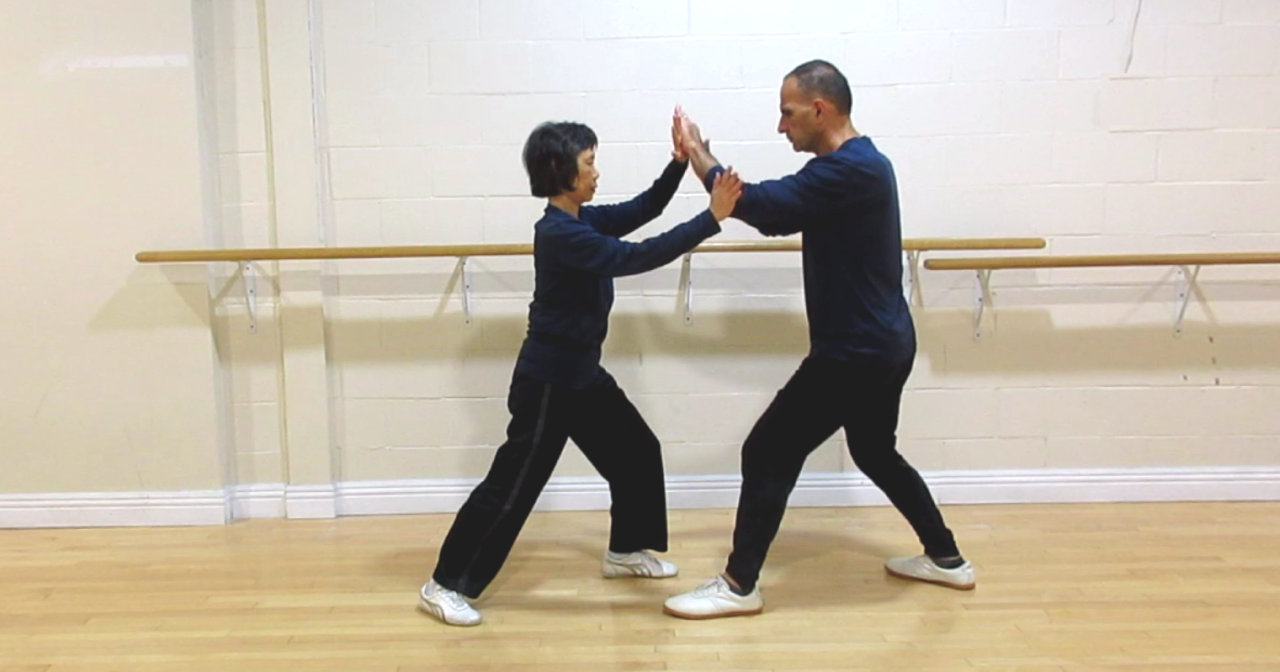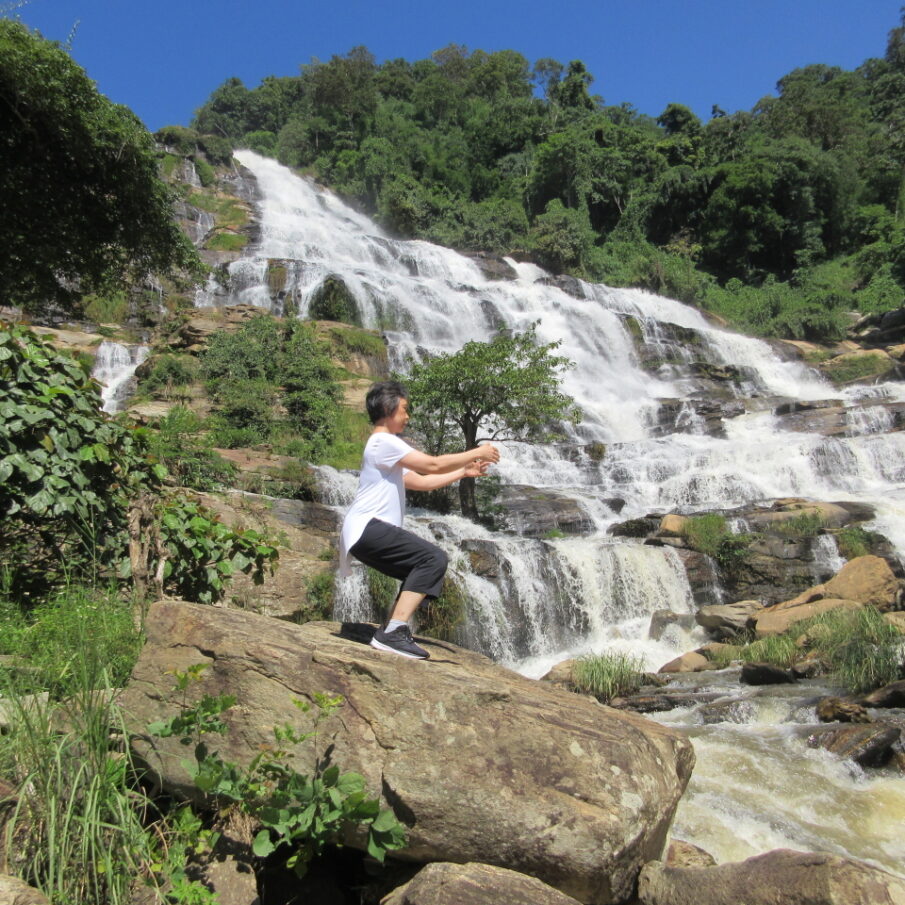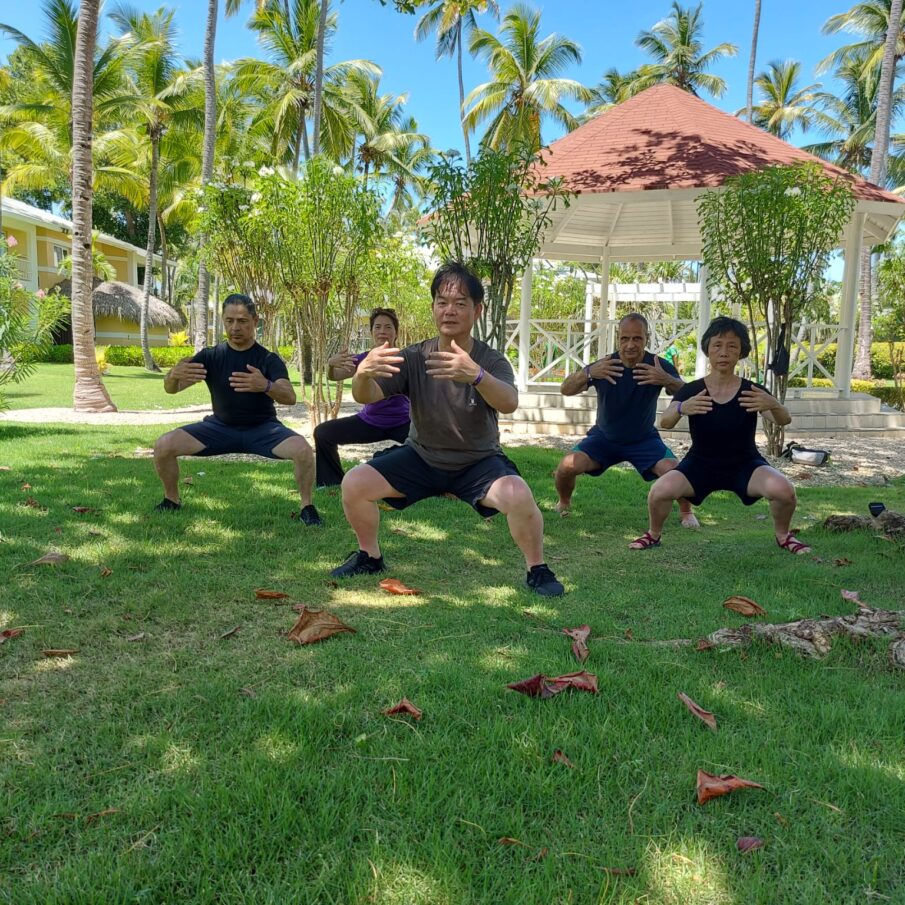In Part 1 of our discussion, we learned the Yang Style single hand push. Next we continue to learn a second pattern.
Yang Style Double Hands Push
The next pattern to learn involves both arms and may appear to be complicated at first glance. The key is learning when to lead and when to follow; after that it is not so complicated anymore.
Beginning Stance
- Step forward with your right foot keeping the same bow stance as the single hand push exercise.
- Raise your right arm in front, making contact with your partner’s arm just below the wrist. Rest your left wrist on your partner’s right arm just below the elbow.
Basic Movement Pattern
- Shift forward bringing your right arm into a horizontal position, placing your left arm on top. Your partner will shift back, resting both hands on top of your left forearm.
- Extend your right arm connecting with your partner’s left arm just below the elbow. Using your left hand lift up your partner’s left arm while keeping your right wrist resting just below your partner’s left elbow. Your partner will just follow.
- Now it is your partner’s turn to shift forward bringing his/her left arm into a horizontal position, placing the right arm on top. You will shift back, resting both hands on top of your partner’s right forearm.
- Your partner will extend his/her left arm connecting with your right arm just below the elbow, lifting your right hand up to the front. Both of you are now back to the beginning stance, you can repeat the pattern from step one.
The key takeaway is at steps 1 & 2, you lead and your partner follows. At steps 3 & 4, your partner leads and you follow.
This pattern will take a lot more practice compared to the single hand pattern before you are comfortable enough to continue with enhancements.
Enhanced Movement Pattern
- Improving the connection 1: At Step 1 when placing the left arm on top, you want the wrists to be as close to the elbows as possible. This is so your partner can rest both wrists on your forearm, not touching your hand.
- Improving the connection 2: At Step 2 when extending your arm, slide along your partner’s arm so you are always in touch, never losing connection to your partner. When your left hand lifts up, the right wrist keeps the connection by starting with the back of the wrist touching, then rotating until it is touching with the inside wrist.
- Switching sides: At the end of Step 2 before your partner begins Step 3, change direction and move your left hand back down into a horizontal position placing your right arm on top. Instead of extending your right arm, you now extend your left arm and effectively switched the pattern to the other side.
- Moving forward: At Step 1 when pushing forward, take a forward step forcing your partner to take a backward step. The pattern continues and does not change.
- Moving backward: At Step 3 when your partner is pushing forward and you are retreating, take a backward step using your hands and wrist to pull your partner with you. The pattern continues and does not change.
Applying Principles
The same basic principles that you apply to the single hand push pattern should also be applied to the double hands push pattern. The significance of these principles is more pronounced as the external interferences have now doubled. With all four limbs committed to the movement, it is much easier to make mistakes like losing your balance, breaking your arm bows or forgetting to relax and sink.
Note that we are still just discussing the first stage of our push hands training: SELF CONTROL. The second stage of learning is: CONTROLLING YOUR OPPONENT.
One of the prerequisites in learning how to control your opponent is to “listen”. To listen in push hands is to pay attention to the contact points, learning as much as you can about your opponent through the contact points. Can you feel the stiffness or softness? Can you gauge the amount of pressure applied? Can you sense the direction of the force?
Using just the two patterns that we have discussed so far, you can begin to hone your listening skills. The concentration and focus of your mind is now even more important.




gut